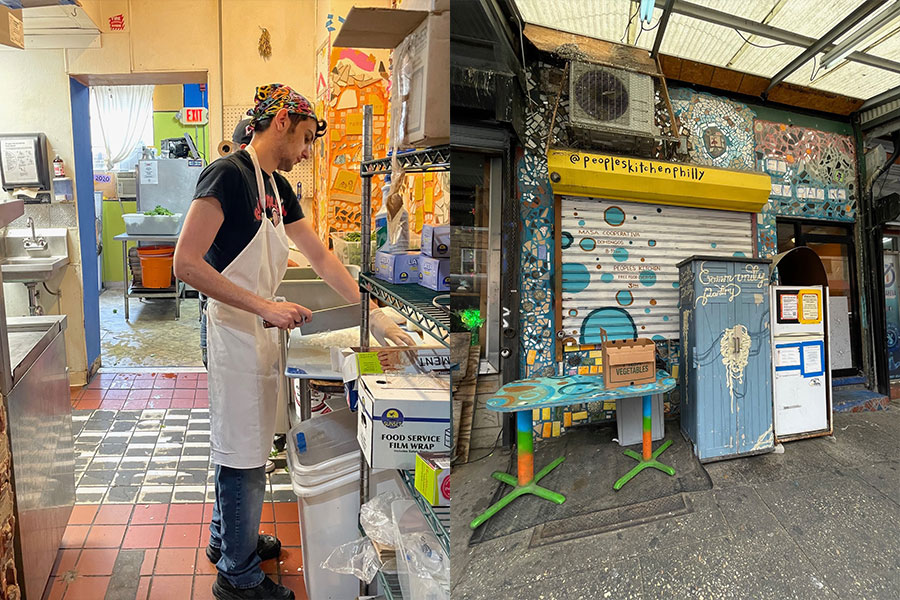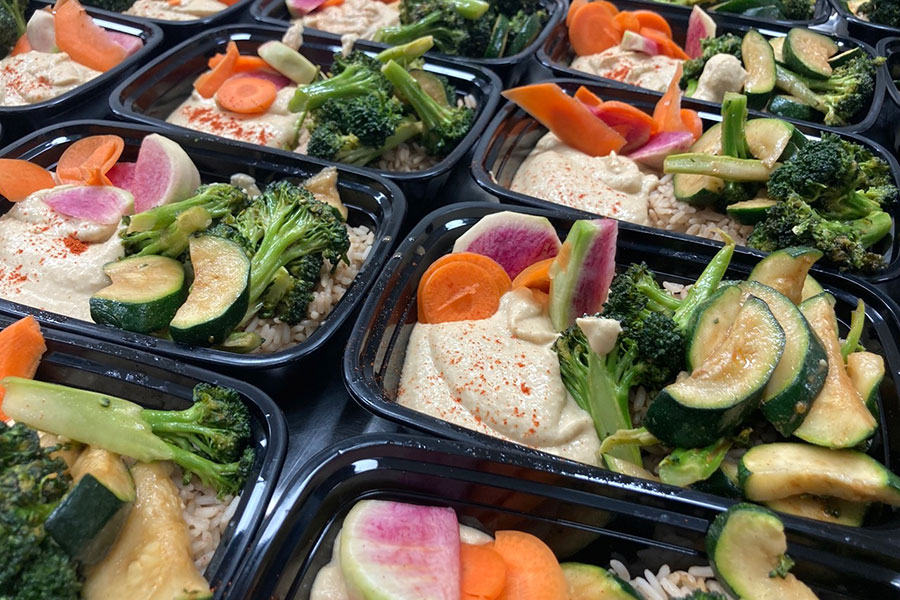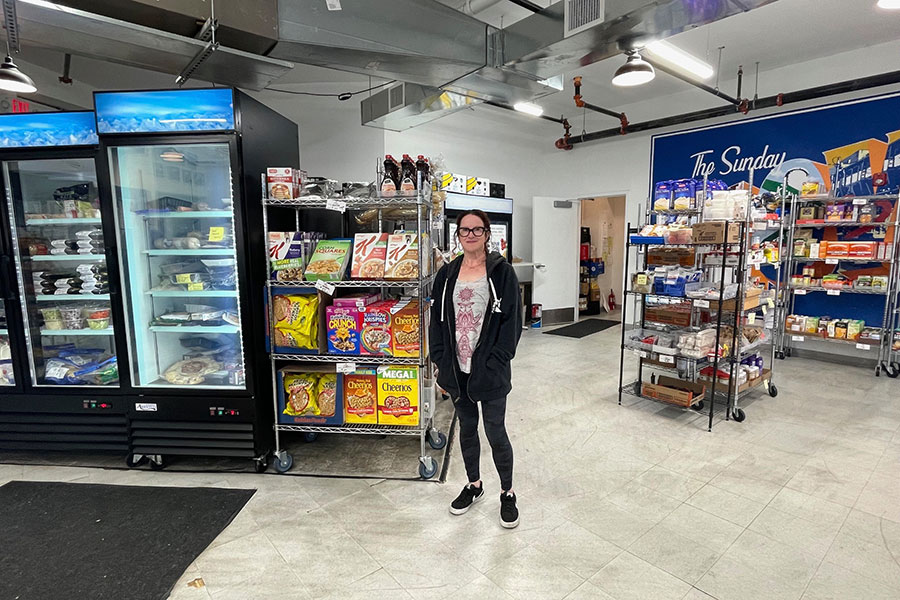
Back to News

Philadelphia has a major food problem, and it’s not a shortage. At least 206 million pounds of food end up in the trash every year in this city, with about 27 percent coming from restaurants and caterers, according to Philadelphia’s Office of Sustainability.
Now, consider that about one in seven Philadelphians will experience food insecurity in their lives, meaning they don’t have access to proper nutrition or don’t know where their next meal will come from. Those are some sobering statistics, especially considering our growing food scene. Here we are, a city with a vibrant, booming dining scene, throwing away mountains of edible food while many struggle to eat.
But there are local nonprofits and mutual aid groups working to close the food security gap by creating a new distribution system that eliminates waste. They organize community meal access through partnerships with farms and local stores and through donations to lift people out of emergency-need situations. On any given day, that work might look like last-minute drives to wherever food surplus is, cooking in shared kitchens, and handing it out to folks in need. It all centers around returning dignity to people through providing fresh food access.

No one knows more about how fresh ingredients can benefit the community than April McGregor, culinary director of the People’s Kitchen, where the very act of preparing food together builds community. “With no questions asked, we believe everyone deserves high-quality food made with love and intention,” McGregor says. Inside the kitchen on 9th Street, food waste delivered by organizations like Philly Food Rescue and Sharing Excess is mixed with donations from neighbors to create a menu based on what’s culturally relevant to the community the kitchen serves, like couscous and tomato salad, beef picadillo, and stir-fried chicken feet, a request from Asian neighbors. They’ve built strong relationships with their community, understanding cultural sensitivity through daily conversation in multiple languages. Meals are placed in a free refrigerator at their door, but People’s Kitchen also partners with mutual aid groups like Food Not Bombs and Punks With Lunch, run by volunteers who interact with people in need on the street and distribute food at coordinated drop-off locations.
“Besides creating 500 to 600 meals a week, we are providing a walk-in fridge for other food rescue groups to store food for freshness or act as a place to drop off recyclables,” McGregor says. “Food distribution requires all this work and preparation.”

Across town, Double Trellis Food Initiative is run by Matthew Stebbins, who shepherds a small team in long days of preparing over 300 meals for 25 partners across 14 zip codes. They use every ingredient they can and incorporate feedback from the community they serve. It’s important to Stebbins to create meals that are exciting, but also familiar. “There’s some recognizing and reframing names of meals so they are familiar … even if you’re introducing new ingredients that people love.”
It’s possible you’ve come across a Double Trellis or People’s Kitchen meal in one of seven South Philly Community Fridges across the city. Sourcing food, cleaning pantries, and maintaining fridges is done by SPCF volunteers, but also by people in the neighborhood, says volunteer Kathryn Nolan. “The pantries are open 24/7 and can be accessed 24/7. Anyone can take or put food in the pantry,” Nolan says. “Folks who use it will tidy it, too. There’s no power dynamic between volunteer or user.” SPCF, along with other pantries like Mama Tee’s and the Northeast Community Fridge, provides a space where people can freely pick up meals or ingredients without shame.
The autonomy of choice is what drives the Sunday Love Project’s Greater Goods, a storefront just under the Allegheny train station in Kensington. On most days, you’ll find Margaux Murphy, founder and executive director of The Sunday Love Project, greeting local families who’ve come in looking for food. Partners like Food Connect Group — a nonprofit using real-time technology to expedite the process of finding food excess — provide produce and ingredients from multiple locations so that shoppers can pick from rice, beans, meats, produce, and much more. With staff assistance, they can also learn how to build out a menu at home.

“We try to teach them how to put together recipes with the ingredients they get here, so it’s not out of reach,” she explains. Greater Goods focuses on helping families make choices that set them up for success in the future, and everything is free to those in need. There’s even a special section for kids, with tiny shopping carts they can fill with items from a tiny fridge, to encourage excitement around healthy eating from a young age. Because she is part of the local community, Murphy is invested in its future. “I try to stay on the healthier side,” Murphy says of the items she stocks. “My goal is not to keep people in a system where they’re going to be sick.”
As you can see, these groups don’t work alone. From farm to store and kitchen to pantry, they depend on each other and the larger community. While holidays are a popular time to volunteer with food banks, the truth is that they need help every single day, especially with funding in danger. There are so many ways you can be a part of this system.

A recurring donation is the best way to help. All of the groups in this network have to think quickly to fill emergency needs. There’s no better way to help them stay flexible and fast than regular donations they can count on. Even just a couple of dollars a month can add up, and donations to 501(c)(3) organizations are tax-deductible.
Shop at your local grocer, deli, and farmers’ markets to support community businesses. Where you spend your dollars can impact the holistic food ecosystem.
Make sure that the item you’re donating is what the organization actually needs. Five boxes of pasta can go a long way in a pantry, but kitchens like Double Trellis cook in bulk. “We don’t have a lot of space for hopes and dreams when you’re cooking for 300 people,” Stebbins says.
Think beyond food to other needs that keep organizations running. The People’s Kitchen’s McGregor likens cooking oil and food packaging to gold. SPCF agrees cooking oil is always a popular item for their pantry visitors as well. Kitchen maintenance, data entry, delivery driving, and grantwriting skills are helpful, too.
Look to your community. If you’re a shop owner, consider adding a small sum to checks to benefit a food redistribution group. Or, read up on the Good Samaritan Law to understand what you can donate from your restaurant to Food Connect Group. If you manage a community group or have a social media following, consider setting up a neighborhood food drive for a food pantry.
One of the biggest problems in solving food inequity is the stigma of needing free food. To help remove this stigma, go out and meet people in your community to understand what food insecurity really looks like. Volunteer with a mutual aid group to distribute food and change your understanding of emergency needs. Be aware of how your actions impact others and how we can be stronger as a community.

Anne Marie Dooling
6/16/2025
